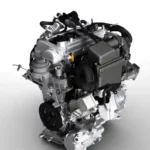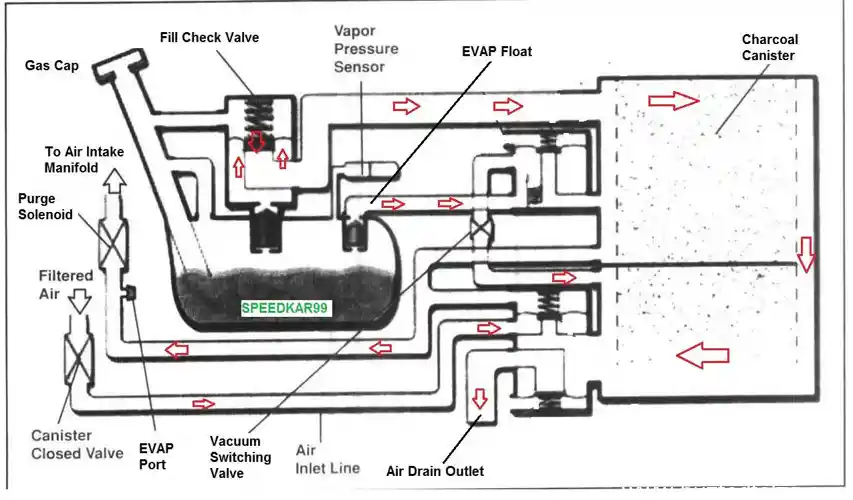
In the realm of automotive emissions control, Toyota’s EVAP (Evaporative Emission Control) system plays a crucial role in minimizing the release of harmful fuel vapors into the atmosphere. This intricate system monitors and purges fuel vapors from the vehicle’s fuel tank, ensuring compliance with strict environmental regulations. In this comprehensive guide, we delve into the intricate workings of Toyota’s EVAP system, exploring its various components, monitoring mechanisms, and the intricate purge process. We will also shed light on the impact of variable valve timing and engine operation on EVAP system performance, empowering you with the knowledge to troubleshoot common issues and maintain the optimal health of this vital emissions control system. By understanding the nuances of Toyota’s EVAP system, you gain the ability to contribute to cleaner air and a more environmentally conscious automotive experience.
How Toyota’s EVAP System Monitors and Purges Fuel Vapors

Toyota’s EVAP (Evaporative Emission Control) system plays a crucial role in reducing fuel vapors released into the atmosphere. This comprehensive system constantly monitors fuel vapor levels in the fuel tank and lines using sophisticated sensors, ensuring that any vapors are effectively purged and directed back into the engine for combustion. The purging process is meticulously controlled, initiated under specific conditions to optimize engine performance while minimizing emissions. Understanding the intricacies of this system is essential for maintaining optimal emissions control and ensuring the efficient operation of your Toyota vehicle.
.
Understanding the Role of the EVAP System
Toyota’s EVAP system is equipped with sensors that diligently monitor fuel vapor levels. These sensors, like vigilant watchdogs, keep a watchful eye on the amount of fuel vapors present in the EVAP system. When vapor levels rise above a predetermined threshold, the system initiates a purging process to effectively remove these vapors from the system. Think of it like a carefully orchestrated dance between the sensors and the purging mechanism, working in harmony to ensure optimal performance and compliance with emissions regulations.
.
Monitoring Fuel Vapor Levels with Sensors
Fuel vapors can be a pesky problem, but the Toyota EVAP (Evaporative Emission Control) system is a guardian against them. It’s equipped with sensors that keep a watchful eye on vapor levels in the fuel tank, ensuring they don’t overstep the mark. Just like a vigilant sentinel, these sensors stand guard, ready to sound the alarm if the vapor pressure starts to swell beyond the acceptable range.
The Intricacies of the Purge Process in Toyota’s EVAP System
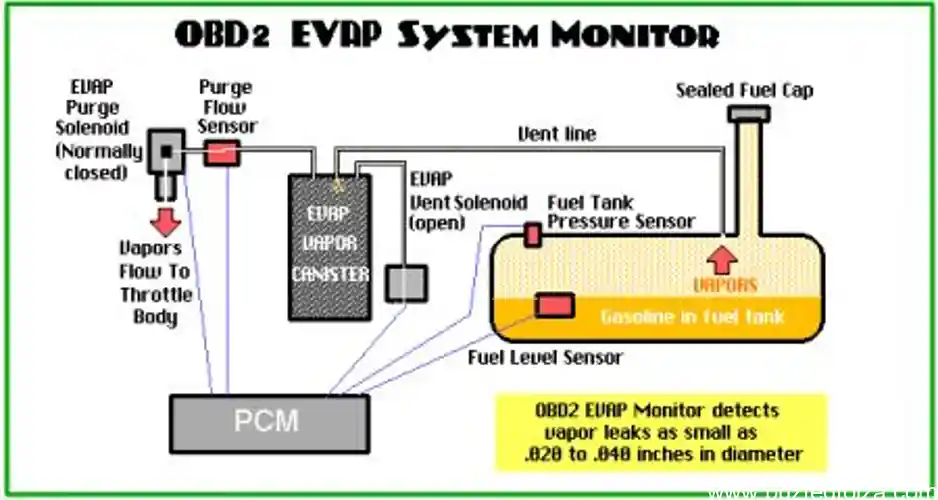
In the intricate dance of a Toyota’s EVAP (Evaporative Emission Control) system, the purge process plays a pivotal role in keeping fuel vapors in check. Just as a vacuum cleaner sucks dirt and debris, the EVAP system’s purge valve opens, creating a vacuum that draws fuel vapors stored in the charcoal canister back into the engine. This orchestrated purging ensures that these vapors are burned rather than escaping into the atmosphere, effectively minimizing emissions and keeping our planet’s air cleaner.
Initiating the Purge Cycle
The purge process in Toyota’s EVAP system is a crucial mechanism that eliminates harmful fuel vapors from the vehicle. It involves opening the purge valve at specific intervals, allowing vacuum from the engine’s intake manifold to draw the vapors out of the charcoal canister and into the engine, where they are burned as fuel. This process helps maintain optimal engine performance and reduces emissions by preventing unburned fuel vapors from escaping into the atmosphere. Understanding the intricacies of the purge process, including when it initiates and how vacuum is utilized to remove vapors, is essential for ensuring the EVAP system’s effectiveness in controlling emissions.
.
Utilizing Vacuum to Remove Vapors
The purge process in Toyota’s EVAP system is a crucial mechanism that ensures the efficient removal of fuel vapors from the fuel tank and lines. This process prevents fuel vapors from escaping into the atmosphere and contributes to the vehicle’s emissions control system. The purge process is initiated when the engine’s vacuum is applied to the EVAP canister, drawing fuel vapors from the canister and through the purge valve into the engine’s intake manifold. This vacuum is created by the engine’s intake stroke, which draws air and fuel into the cylinders.
The purge valve is controlled by the engine’s electronic control module (ECM), which monitors various engine parameters to determine the optimal timing for the purge cycle. The ECM considers factors such as engine load, temperature, and speed to ensure that the purge process does not interfere with the engine’s performance. The purge process is an essential part of Toyota’s EVAP system, ensuring that fuel vapors are properly managed and the vehicle meets emissions regulations.
Variable Valve Timing and Engine Operation Impact on EVAP System Performance
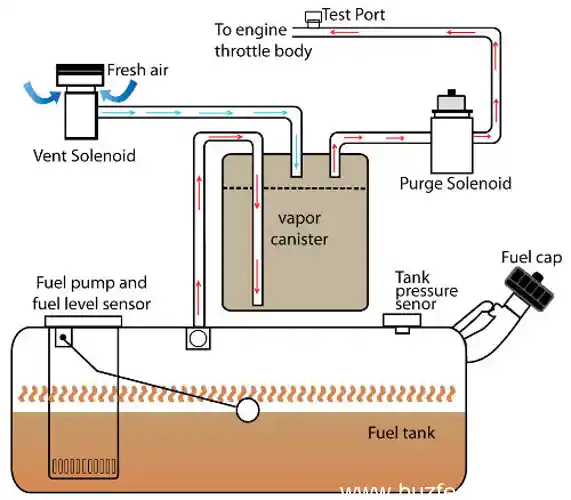
Variable valve timing is like a shrewd traffic controller, orchestrating the opening and closing of valves to optimize engine performance. In Toyota’s EVAP system, this intricate choreography impacts how effectively fuel vapors are purged. When the engine operates at low loads and low temperatures, the valve timing adjusts to create a higher vacuum in the intake manifold. This vacuum acts like a powerful suction, drawing fuel vapors from the EVAP canister and into the engine, where they’re safely burned.
As engine load and temperature increase, the valve timing shifts, reducing the vacuum and allowing the EVAP system to purge vapors at a slower, more controlled rate. This dynamic interplay between valve timing and engine operation ensures that the EVAP system operates efficiently across a wide range of driving conditions, minimizing harmful emissions and maximizing vehicle performance.
Valve Timing’s Influence on Purge Efficiency
The timing of your valves and the way your engine runs can have a big impact on how well your EVAP system does its job. When the valves open and close affects how much vacuum is created in the intake manifold, which in turn affects how well fuel vapors are purged from the canister. The load on the engine and its temperature can also affect the purge process. For example, when the engine is under a lot of load, such as when you’re accelerating or climbing a hill, the vacuum in the intake manifold is lower, which can reduce the effectiveness of the purge.
Similarly, when the engine is cold, the purge process may be less effective because the charcoal canister is less efficient at absorbing fuel vapors at lower temperatures.
Engine Load and Temperature Considerations
Variable valve timing is a crucial factor that influences the effectiveness of the EVAP system in Toyota vehicles. By optimizing the timing of valve opening and closing, the system can maximize the purge efficiency and minimize fuel vapor emissions. For instance, when the engine is operating at low loads and low temperatures, the valve timing is adjusted to promote a higher vacuum in the intake manifold. This increased vacuum aids in drawing fuel vapors from the EVAP canister and purging them into the engine for combustion.
On the other hand, during high-load and high-temperature conditions, the valve timing is modified to reduce vacuum and prevent excessive purging, which could result in a lean air-fuel mixture and potential engine damage. By finely tuning the valve timing based on engine operating conditions, Toyota’s EVAP system ensures optimal purge efficiency while maintaining engine performance and emissions control.
Troubleshooting Common Issues with Toyota’s EVAP System
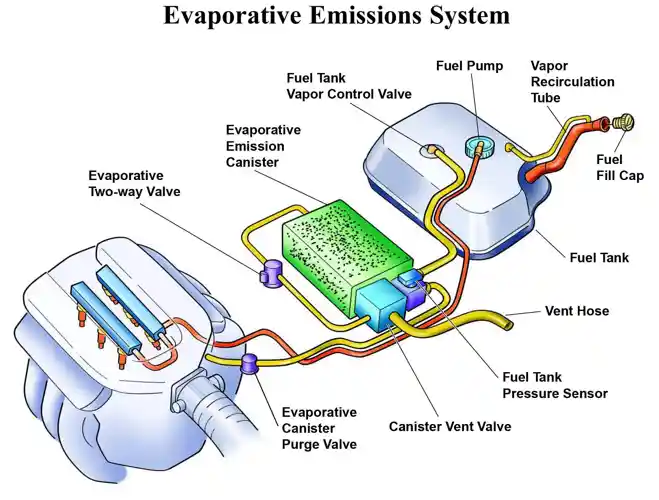
Troubleshooting Toyota’s EVAP system can be a challenge, but understanding the underlying issues can help you diagnose and resolve them effectively. Malfunctioning components, such as the EVAP canister, purge valve, or sensors, can disrupt the system’s ability to monitor and purge fuel vapors. These components play vital roles in detecting vapor levels, initiating purge cycles, and removing vapors from the system. Identifying these faulty parts requires a systematic approach, involving visual inspections, electrical testing, and data analysis from diagnostic trouble codes.
By understanding the common issues and their potential causes, you can effectively troubleshoot your Toyota’s EVAP system and ensure optimal emissions control.
Identifying Malfunctioning Components
When it comes to troubleshooting common issues with Toyota’s EVAP system, the key is to pinpoint the malfunctioning components. This can be achieved through a combination of visual inspections, electrical testing, and advanced diagnostic tools. Visual inspections allow us to examine the system’s hoses, valves, and other components for signs of damage or leaks. Electrical testing involves checking the voltage and continuity of electrical circuits to ensure proper functionality of sensors and actuators.
Advanced diagnostic tools, such as scan tools, can provide detailed information about system operation, including live data and fault codes. Interpreting these codes accurately is crucial for identifying the root cause of the issue and implementing effective repairs.
Interpreting Diagnostic Trouble Codes
If you’re encountering issues with your Toyota’s EVAP system, it’s crucial to pinpoint the underlying cause. The system’s intricate network of components can lead to a range of symptoms, making troubleshooting a challenge. But fear not! With the right diagnostic tools and a keen eye, you can identify malfunctioning parts and resolve any issues promptly. Interpreting diagnostic trouble codes is key, as they provide valuable clues about the system’s status.
Remember, maintaining a healthy EVAP system is essential for optimal emissions control, safeguarding both the environment and your vehicle’s performance.
Maintaining the Health of Toyota’s EVAP System for Optimal Emissions Control
Maintaining the health of your Toyota’s EVAP system is crucial for optimal emissions control and overall vehicle performance. Regular inspections and servicing are key to ensuring your EVAP system is operating at its best. During inspections, mechanics can check for any leaks, loose connections, or damaged components that could compromise the system’s effectiveness. Additionally, they can perform diagnostic tests to identify any potential issues before they become major problems.
By addressing minor issues early on, you can prevent costly repairs down the road and ensure your Toyota continues to meet emissions standards.
Regular Inspections and Servicing
Maintaining the health of Toyota’s EVAP system is crucial for optimal emissions control. Regular inspections and servicing are essential. During inspections, mechanics examine components like the purge valve, canister, and sensors for any signs of damage or wear. Servicing involves replacing worn-out parts, cleaning the system, and checking for leaks.
Preventing fuel tank overfilling is also important. Overfilling can lead to fuel entering the EVAP system, causing damage and reducing its effectiveness.
Preventing Fuel Tank Overfilling
Regular maintenance is the key to ensuring a healthy and efficient EVAP system. By adhering to the manufacturer’s recommended inspection and servicing schedule, you can proactively identify any potential issues before they become major problems. During these inspections, have a mechanic check the integrity of all components, including the fuel tank, lines, hoses, valves, and sensors. They will also examine the system for any leaks or damage that could compromise its ability to effectively monitor and purge fuel vapors.
Remember, a well-maintained EVAP system不僅 can prevent costly repairs but also optimizes your Toyota’s emissions control performance, contributing to cleaner air for everyone.
**Q5. How does the EVAP system prevent fuel vapors from escaping?**
**Q6. What are the symptoms of a faulty EVAP system?**
**Q4. What is the purpose of the purge valve?**
**Q5. How does the EVAP system prevent fuel vapors from escaping?**
**Q6. What are the symptoms of a faulty EVAP system?**
**Q3. How is the EVAP system activated?**
**Q4. What is the purpose of the purge valve?**
**Q5. How does the EVAP system prevent fuel vapors from escaping?**
**Q6. What are the symptoms of a faulty EVAP system?**
**Q2. What are the components of the Toyota EVAP system?**
**Q3. How is the EVAP system activated?**
**Q4. What is the purpose of the purge valve?**
**Q5. How does the EVAP system prevent fuel vapors from escaping?**
**Q6. What are the symptoms of a faulty EVAP system?**
**Q1. How does the Toyota EVAP system work?**
**Q2. What are the components of the Toyota EVAP system?**
**Q3. How is the EVAP system activated?**
**Q4. What is the purpose of the purge valve?**
**Q5. How does the EVAP system prevent fuel vapors from escaping?**
**Q6. What are the symptoms of a faulty EVAP system?**
**Q1. How does the Toyota EVAP system work?**
**Q2. What are the components of the Toyota EVAP system?**
**Q3. How is the EVAP system activated?**
**Q4. What is the purpose of the purge valve?**
**Q5. How does the EVAP system prevent fuel vapors from escaping?**
**Q6. What are the symptoms of a faulty EVAP system?**
